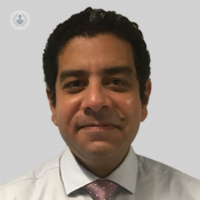Ask an expert: What’s involved in breast reduction surgery?
Written by:For women with a large breast size, persistent back and shoulder pain may lead them to consider undergoing breast reduction surgery. In this informative guide for patients, highly respected consultant general surgeon Mr Mina Youssef shares his expert insight on what is involved in breast reduction surgery and the recovery period to follow.

What is breast reduction?
Breast reduction is the standard operation which is performed to reduce the size of the breast. Breast size is typically defined in two ways; volume and shape. The volume is the amount of breast tissue and the shape is how the breast tissue is distributed within the skin envelope. A breast reduction aims to reduce breast volume as well as correct breast shape. Therefore the surgery involves reducing the amount of breast tissue and reshaping the skin envelope to make it higher, firmer and less ptotic (drooping).
What makes a person eligible for the procedure?
That’s a tricky question. Although almost anyone can seek out private treatment, to undergo a breast reduction with the NHS, strict funding criteria applies. This includes several factors, an anticipated removal of more than 500 grams of tissue from each breast, persistent back pain and shoulder disability. NHS patients will first see a physiotherapist but if their symptoms don’t improve, they may be recommended for surgery. Another requirement is a BMI of below thirty, or in other words, that the breast size is not proportionate to the frame of the patient.
It could be said that these are the functional criteria for a breast reduction but there are of course cosmetic reasons that people choose to undergo breast reduction surgery. Some people are simply not happy with the shape or the volume of their breasts and it’s totally acceptable to seek out an operation to change that.
What’s involved in breast reduction surgery?
In the procedure, we are looking to change both breast volume and shape. The reduction in volume is achieved by removing extra breast tissue until we reach the desired volume of breast. To change the breast’s shape, we remove the corresponding skin envelope in a way that doesn’t leave a deformity, so that it is reshaped to become tighter, firmer and less ptotic.
Is the procedure painful?
Breast reduction surgery can involve a big scar. This is usually what we call an inverted-T scar, although sometimes it may be a vertical or other type of scar depending on each patient and what is suitable for them. Generally, it is not a very debilitating procedure, and the pain can usually be managed with the usual pain killers and has a recovery period of around two to three weeks.
How long does it take to recover safely?
In the immediate pre-operative period, you may stay one night in the hospital before going home. In the first week or two, you will start to recover your general activity gradually. By three weeks, I expect that you will be fully recovered once the wound has healed without complications.
Can breasts grow back after reduction?
Occasionally we see this happen although it is not very common. Should this occur, another surgery may be required.
If you are considering breast reduction surgery and would like to discuss your options, you can schedule a consultation with Mr Youssef by vising his Top Doctors profile.



